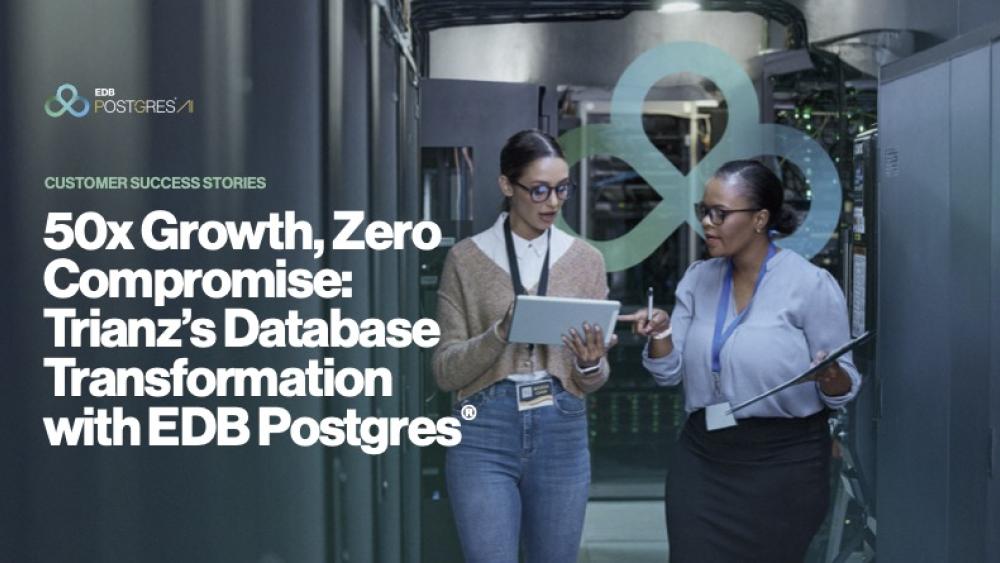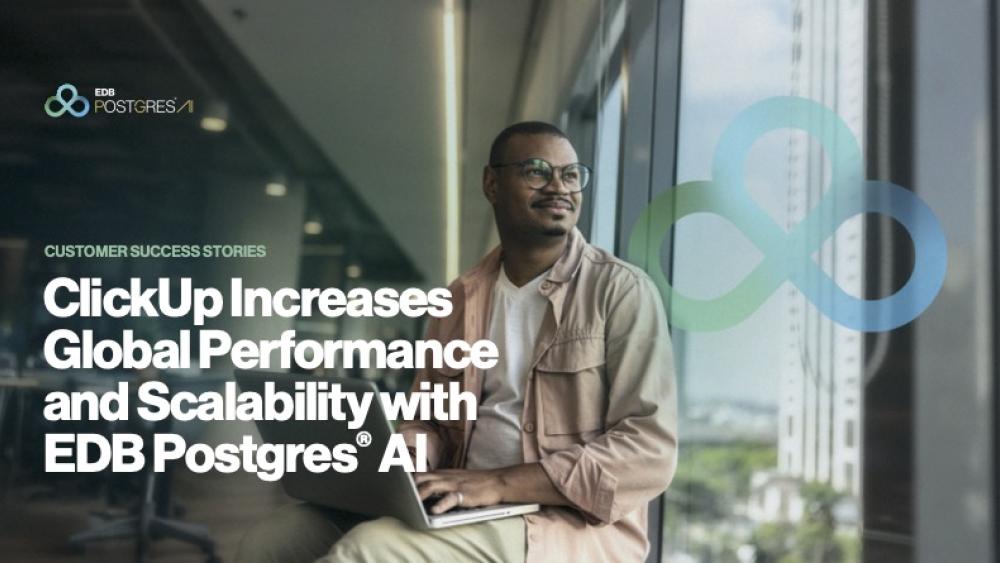AEKWL Modernizes Medical Workflow System with PostgreSQL and EDB
PostgreSQL has become a top choice for enterprises looking to accelerate innovation and modernize their infrastructures. We recently spoke with one of our customers who’s doing just that. Ärztekammer Westfalen-Lippe (AEKWL) is one of the 17 State Chambers of Physicians in Germany. We asked AEKWL CTO Ingo Schmitt to share some information about the organization, the team, and his journey with PostgreSQL and EDB.
Can you tell us a little about AEKWL and what you do?
The Medical Association of Westphalia-Lippe (ÄKWL or AEKWL), a public corporation with its headquarters in Münster, is the professional representative of the approximately 47,000 physicians who practice their profession or,if not working,have their residence in the region of Westphalia-Lippe (administrative districts of Arnsberg, Detmold and Münster). The ÄKWL is the fourth largest of the 17 State Chambers of Physicians in Germany.
In order to practice in Germany, physicians must become a member of one of these chambers. Each doctor/member pays a yearly fee, which is the main source of income for the chambers. The central area of competency of the State Chambers of Physicians lies in the monitoring of compliance to professional duties and standards. They also offer speciality medical training and continuing medical education, check that no obligations are violated, and impose sanctions if necessary.
I am the Head of the Department for Technology and Infrastructure (CTO) at the chamber and I have two teams in the IT area. One is the infrastructure team, which provides the regularly used hardware and software, such as the computers and applications. They also maintain all systems and databases. The other team, which does all the project-related work, mainly develops new systems or services within the company. We do this for our business users—doctors and medical assistants, who access our system through an external portal. Currently, we have around 40,000 external users who access this portal.
Then, of course, there are internal colleagues who use the system as well. They check, for example, all the documents that the doctors either upload through the portal or provide paper copies of. However, an issue arose in which this internal system was not providing us with the seamless flow of information we needed to conduct business with ease.
What was going on in your organization that triggered the need for a new database?
The legacy internal administrative system was causing problems. It was only used by the internal colleagues. Doctors could not access it. At one point, we decided to put a whole new system in place based on new technology and workflows.
Our goal was to get rid of what we call “breaks in media.” For instance, when a doctor would hand in documents in paper form, we would either archive them or scan them in. Once digitized, someone might add some comments to the digital document and print it out again. Then someone else might write a letter related to that document—also on paper. We had a lot of breaks in the workflow, especially the internal one, which was very time and money consuming and caused a lot of unnecessary delays. That is why we decided to put a new system in place, but we needed to do it while slowly decommissioning the old one.
What technology or architectural demands drove the need for a new database?
There are a few reasons we had to develop everything from scratch. First, we were using really old technology based on Oracle forms, which is no longer state of the art. We wanted to have something web based, and that's why we decided to implement a completely new system.
We also wanted to move away from Oracle, mainly because of the licensing fees and other minor problems we were facing. Another issue was that we were trying to virtualize a lot of the servers and databases by using VMware, which leads to a licensing nightmare, especially when it comes to Oracle. This was one of the main reasons we chose to get rid of Oracle and look for something new.
Why did you select EDB and PostgreSQL in the first place?
The EDB Postgres Advanced Server was the only database that could fulfill our needs to write back into the old Oracle system, and that was one of the main things we were looking for. We wanted to have a new database in place, but we also had to maintain the old administrative system that we needed to feed with some of the data coming from the new system.
EDB has a lot of migration experience and projects in place. We decided on EDB, because we wanted to have something that is supported by someone professional and is well known. Having support, that was really important, especially for a portal that is up 24/7.
How did you overcome concerns about using an open source database?
Using an open source database was never really an issue. The managers and the former CIO were already using other open source components or products. We still use open source products for a lot of other applications. So we’re used to it, but, like I mentioned, for a critical component like a database, we absolutely needed to ensure that we had good support.
My advice for other companies is that they shouldn’t fear open source technology, especially in the area of databases. It’s worth giving it a shot. If you can do a POC, for example, then at least consider using open source databases or technology. I've noticed that usually, the help you receive when you use open source, including by the open source community, is really great, and sometimes a lot faster than going back to a big vendor who is maybe not so close to you.
What did EDB do to convince you that we are able to address your needs
First of all, EDB made us a great offer. Secondly, EDB helped us get rid of the problems that we experienced when we were writing data back into the old legacy system, which is Oracle based. We first tried some workarounds, but after a few months, EDB was so kind to provide us with a fix, and that's in place and working well.
From a license perspective, EDB is also very interesting in comparison to Oracle. For example, with EDB, it doesn't really matter what platform you're using underneath your database. It doesn't matter if it's a physical hardware server or a virtualized machine. And this is something that made it so extremely important for us to use EDB. We’re now at a stage where we’re looking into cooperating with other chambers and moving our development and test systems into a data center, which uses different virtualization technology than we do. We use VMware, they use Docker. With EDB, it doesn't make a difference from a licensing perspective, whereas Oracle doesn't allow you to do this, at least with the license we have in place.
What desired outcomes did you have and how has EDB helped you achieve them?
What I noticed when working with EDB was that we are not just a number. When we reach out to EDB with problems, someone immediately takes care of them and calls you. This doesn’t simply become a support ticket. We know which person is dealing with our problems and we get help in a professional and efficient way.
How are you using EDB and PostgreSQL today?
We basically use EDB for data storage at present. Our main goal though is to decommission all Oracle related systems and also some other databases we have in place, like a MySQL database. I would like to migrate these to have only EDB in place. We use EDB for our administrative platform, which is the main system we use at the chamber.
What’s next on your roadmap?
Building and improving our administrative system is work that’s never done. We’re constantly adding new services for the doctors, and our Minister of Health is changing a lot of things in the area of digitalization. At the beginning of next year, for example, each medical doctor needs to have some sort of specific ID card. Every registered doctor in our organization will be able to upload their picture via the web, either by computer or a mobile telephone, and then we can order this ID card. That's one example. There's a whole lot more coming over the next couple of months and years especially in that area.
I also see more potential from a database perspective and I am currently looking into clustering the database server. We've virtualized everything so it's really secure. If something fails or breaks, we can always pull a backup and get it up within a couple of seconds. EDB also offers a lot of extra components and tools for Postgres that make administering the database much easier. They also provide consulting services, which is something else I want to look into quite soon. I’ve seen some other nice technology, like data warehousing or Business Intelligence applications in place at other organizations. That's something I would also like to implement or use in the near future.
How would you describe EDB’s role as your partner?
EDB from my perspective is my strategic partner because I want to use Postgres in the future and only Postgres, if possible. EDB also keeps updating and adding new features and that has helped us a lot.
How has having EDB and Postgres helped ensure business continuity in light of COVID-19?
What I notice, especially from upper management, is that going digital is a must nowadays. That is—and already was—one of my strategic goals for quite some time. Even before COVID-19, I wanted to improve our internal processes and workflows because we still work with way too much paper. I believe EDB can help us with that as we change a lot of internal workflows to a digital form. For example, our DMS (document management system) is really good, but has never really been used the way it could be and that needs to change. EDB helps us these days by being a robust and reliable database with extremely good uptime.
Ready to start your migration? Learn More.



